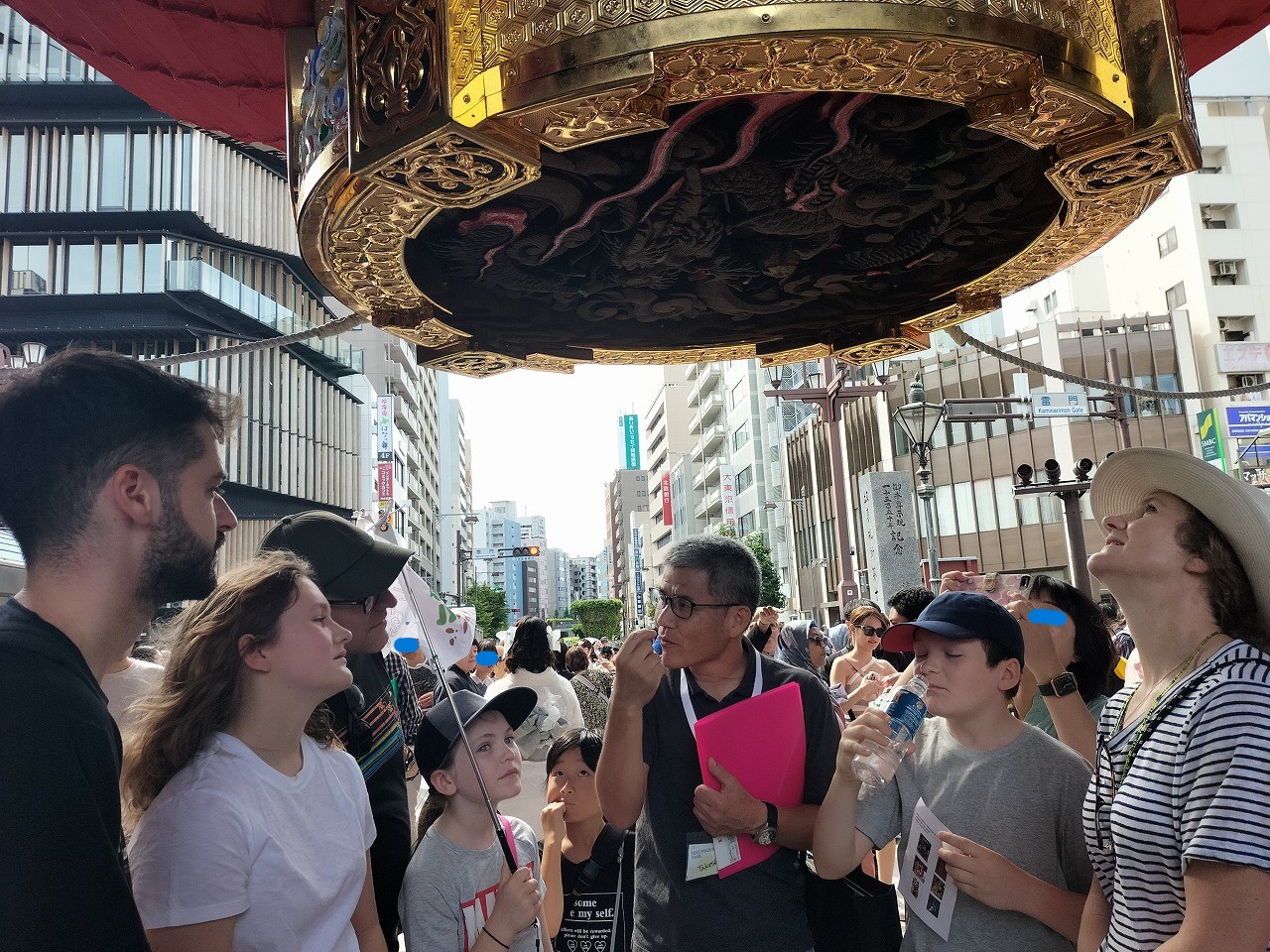We appreciate your participation in our tours in Asakusa and Ueno Park on September 24. 27 guests kindly joined our tours from Australia, Singapore, Vietnam, Israel, UK, Germany, Spain, Italy, Egypt and Canada. Also, we are grateful that some of the guests participated in two tours in a row. It was nice weather and comfortable as if autumn has finally come. Nakamise Street was packed with people as usual and there was a local lively event in Ueno Park. The evening twilight tour showed you an illuminated townscape of Asakusa. As promised the group and snap photos are posted.
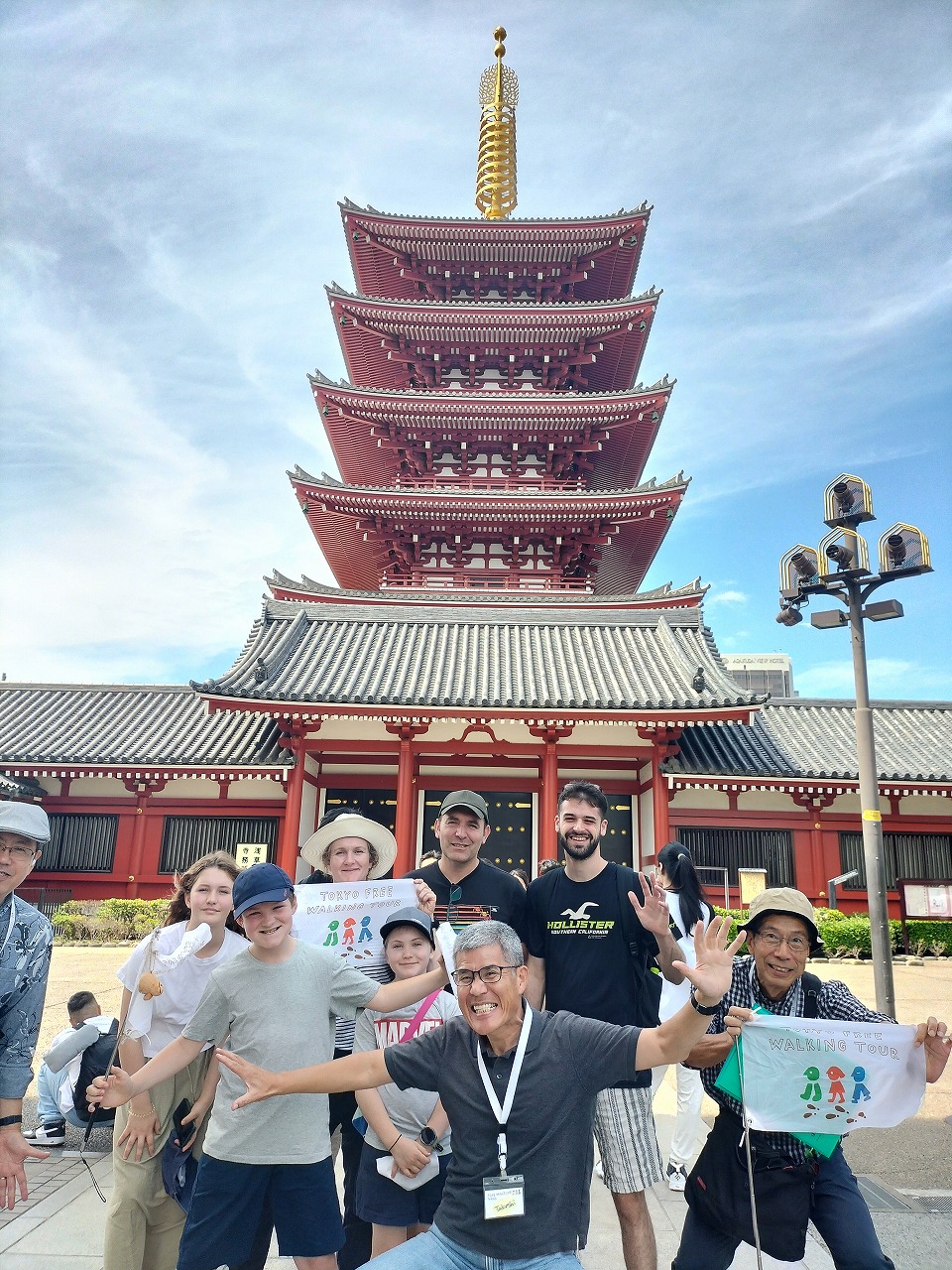



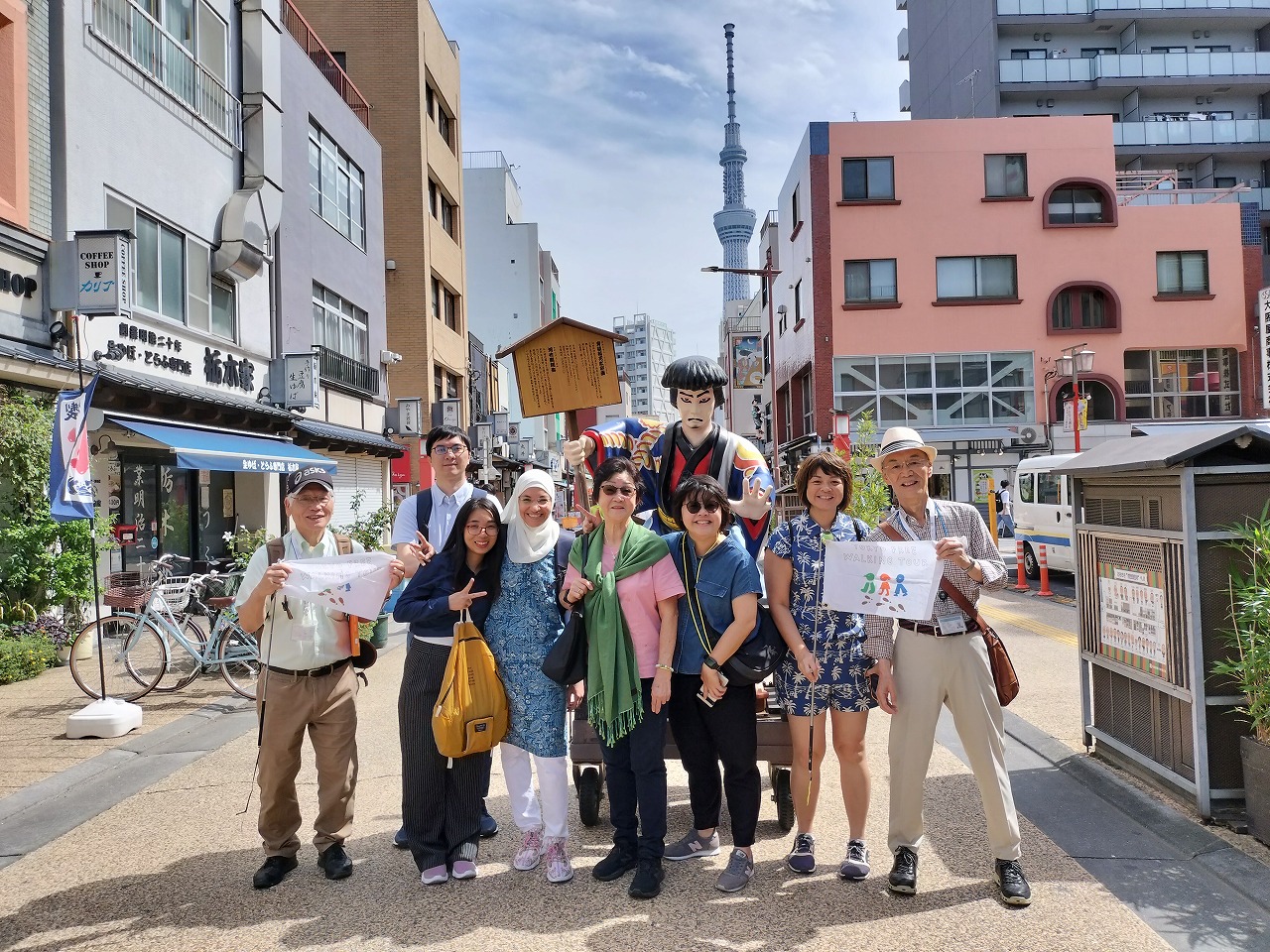



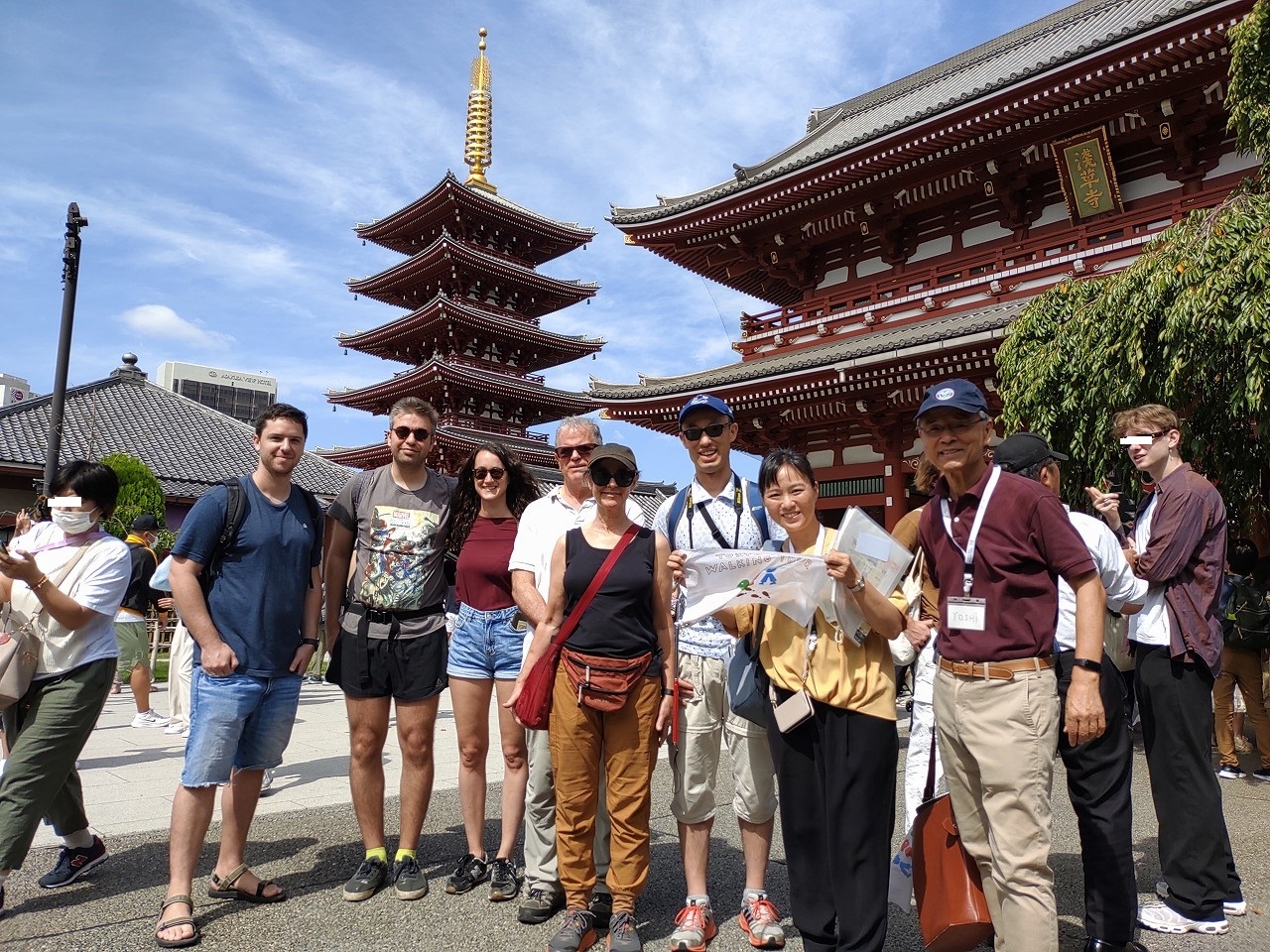
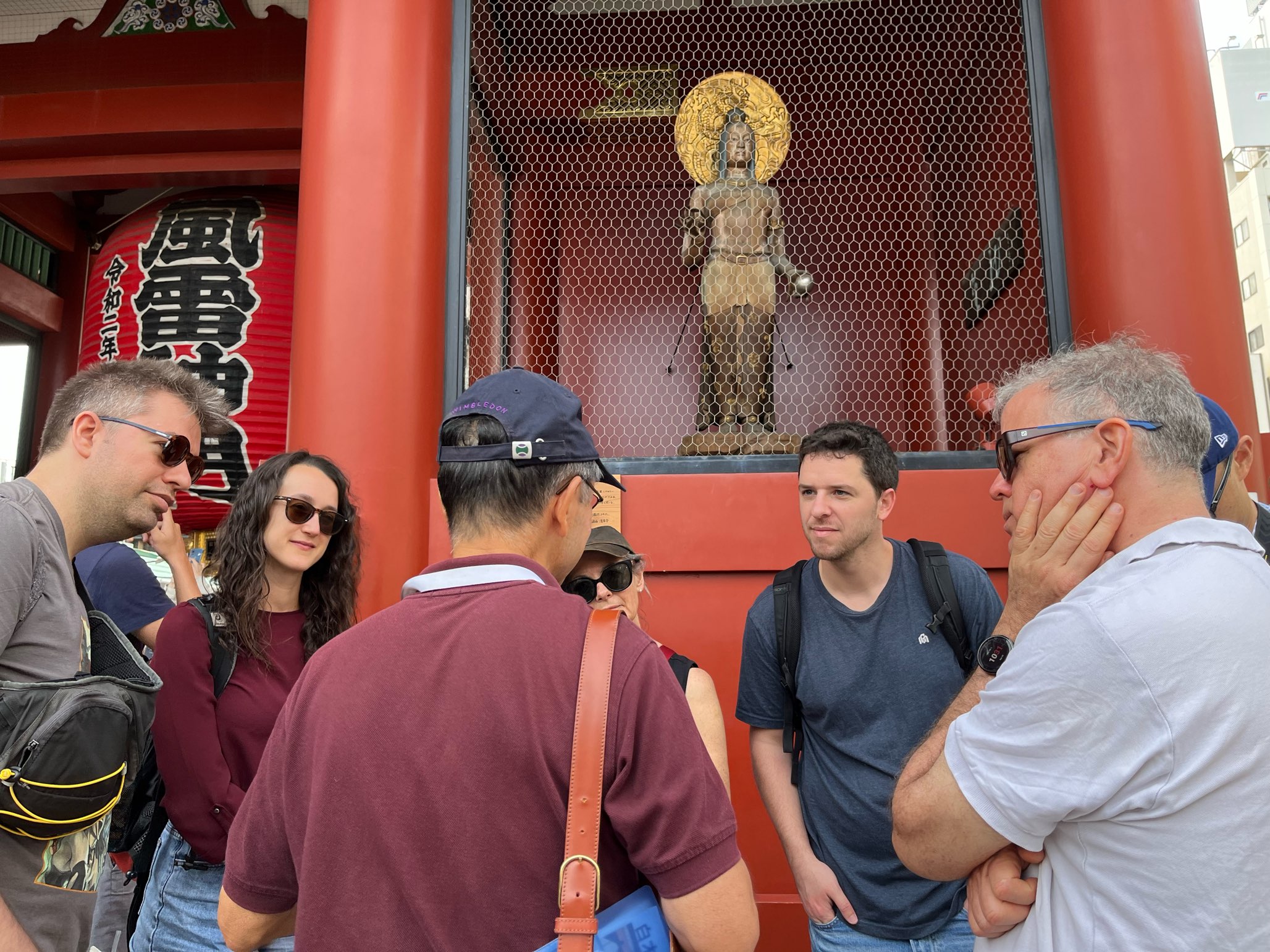
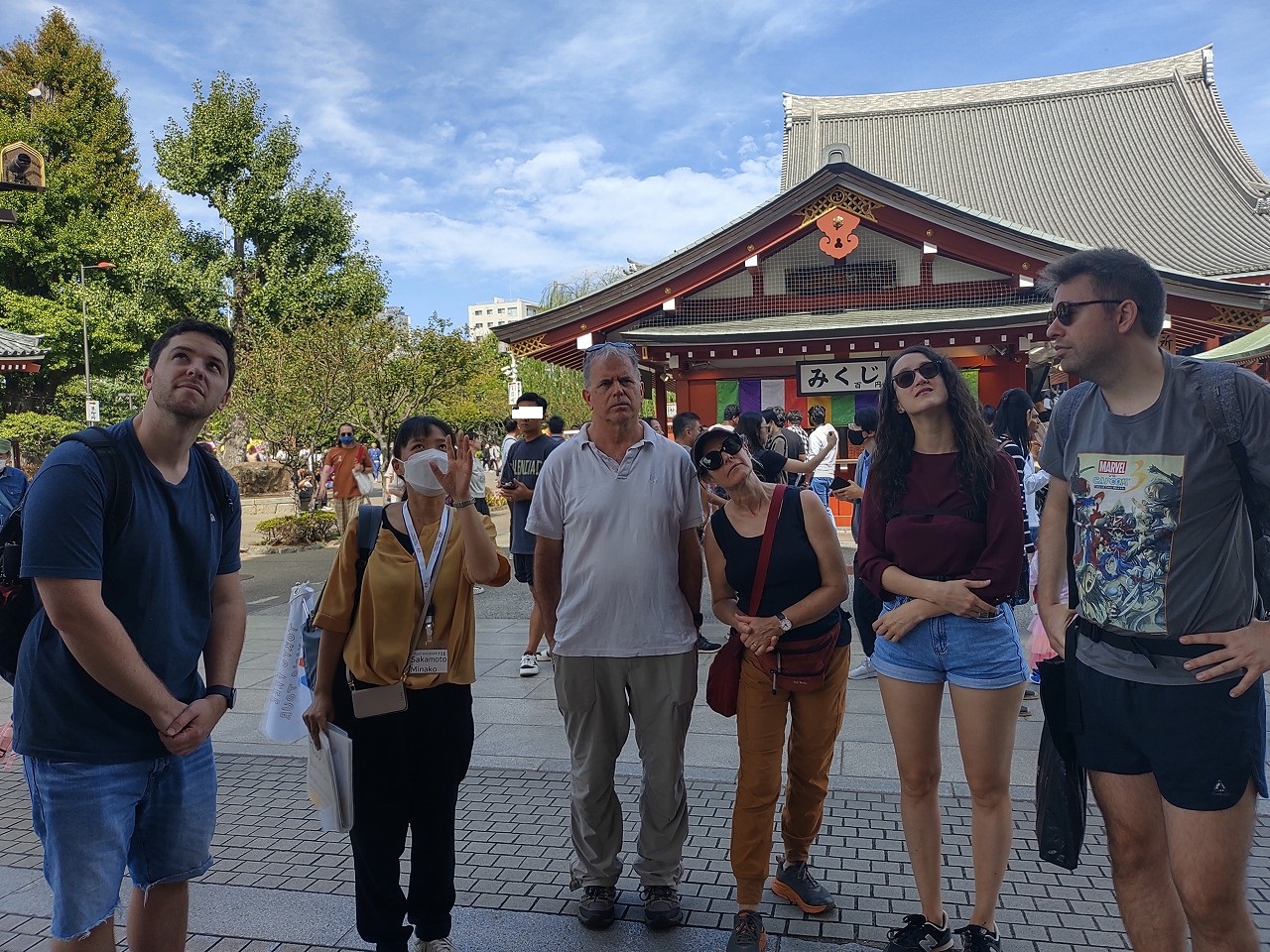

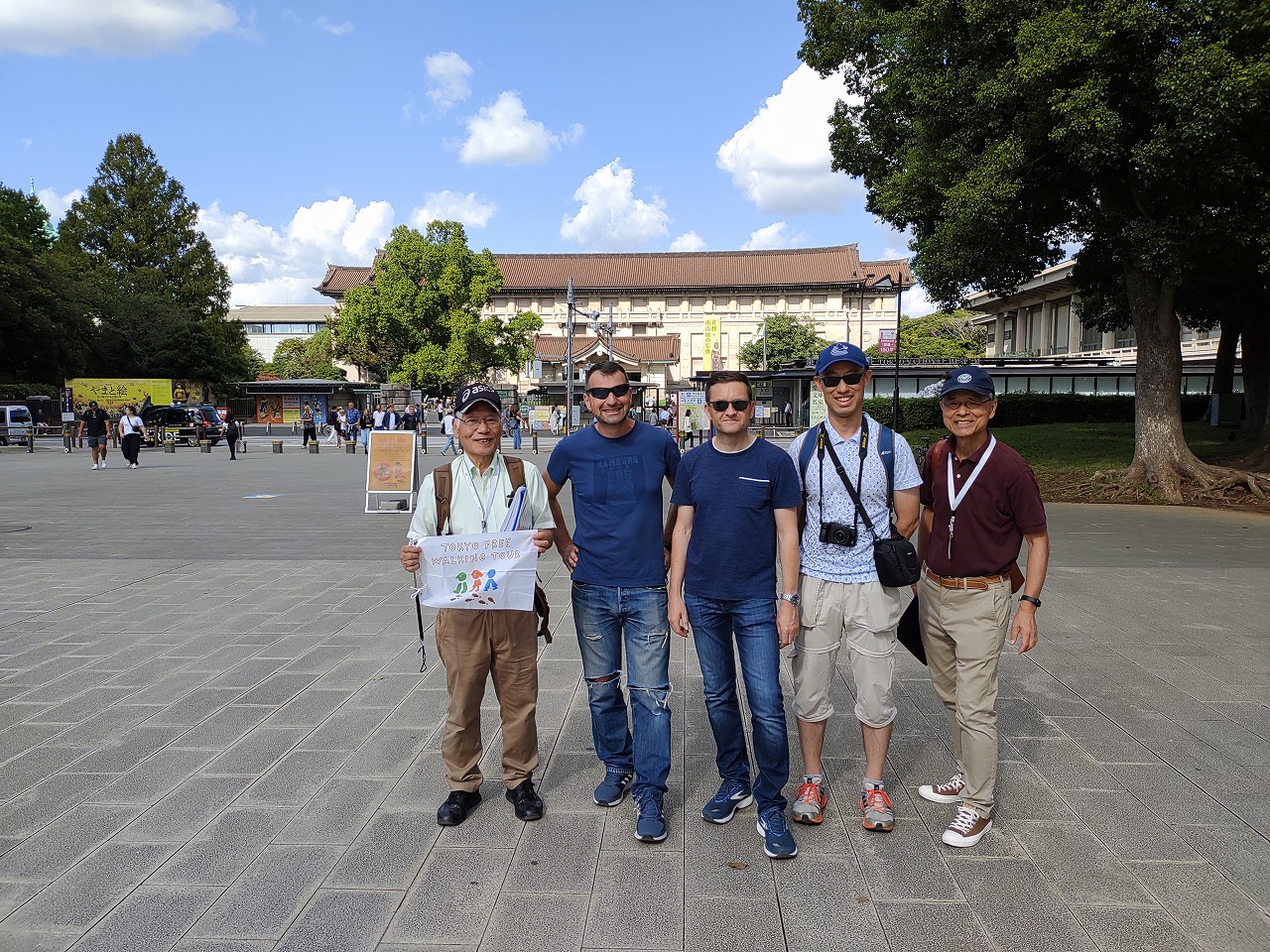
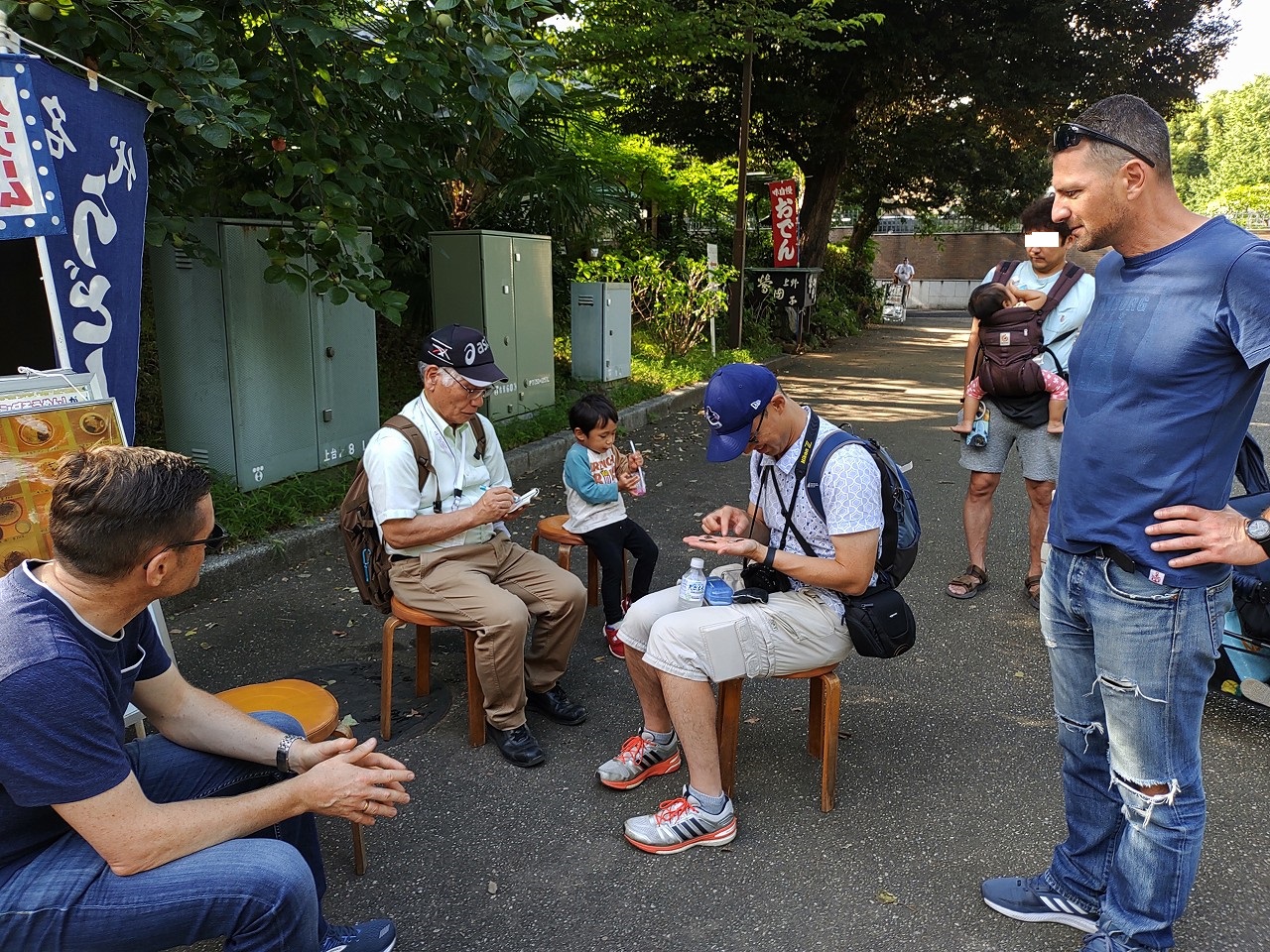
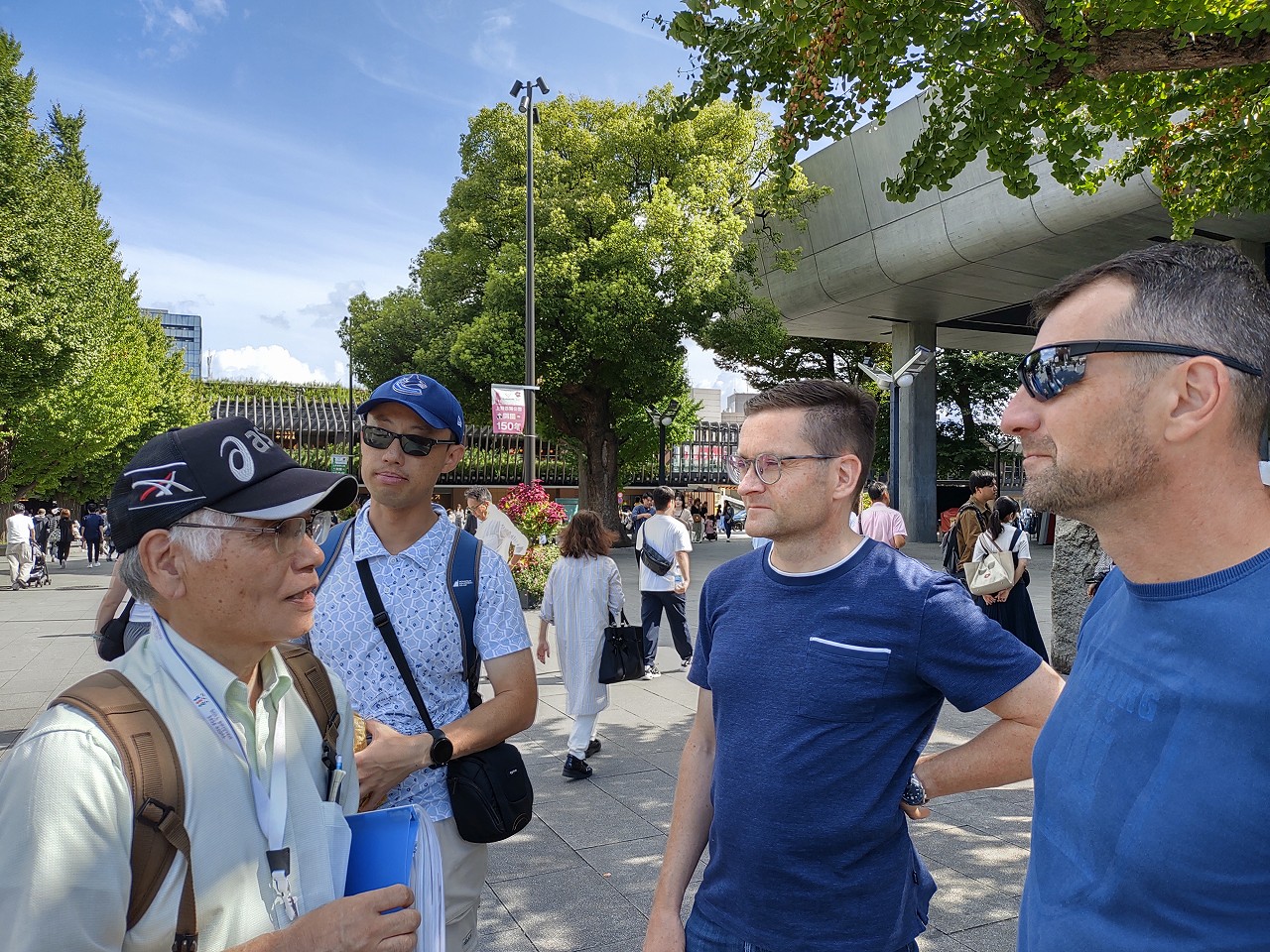
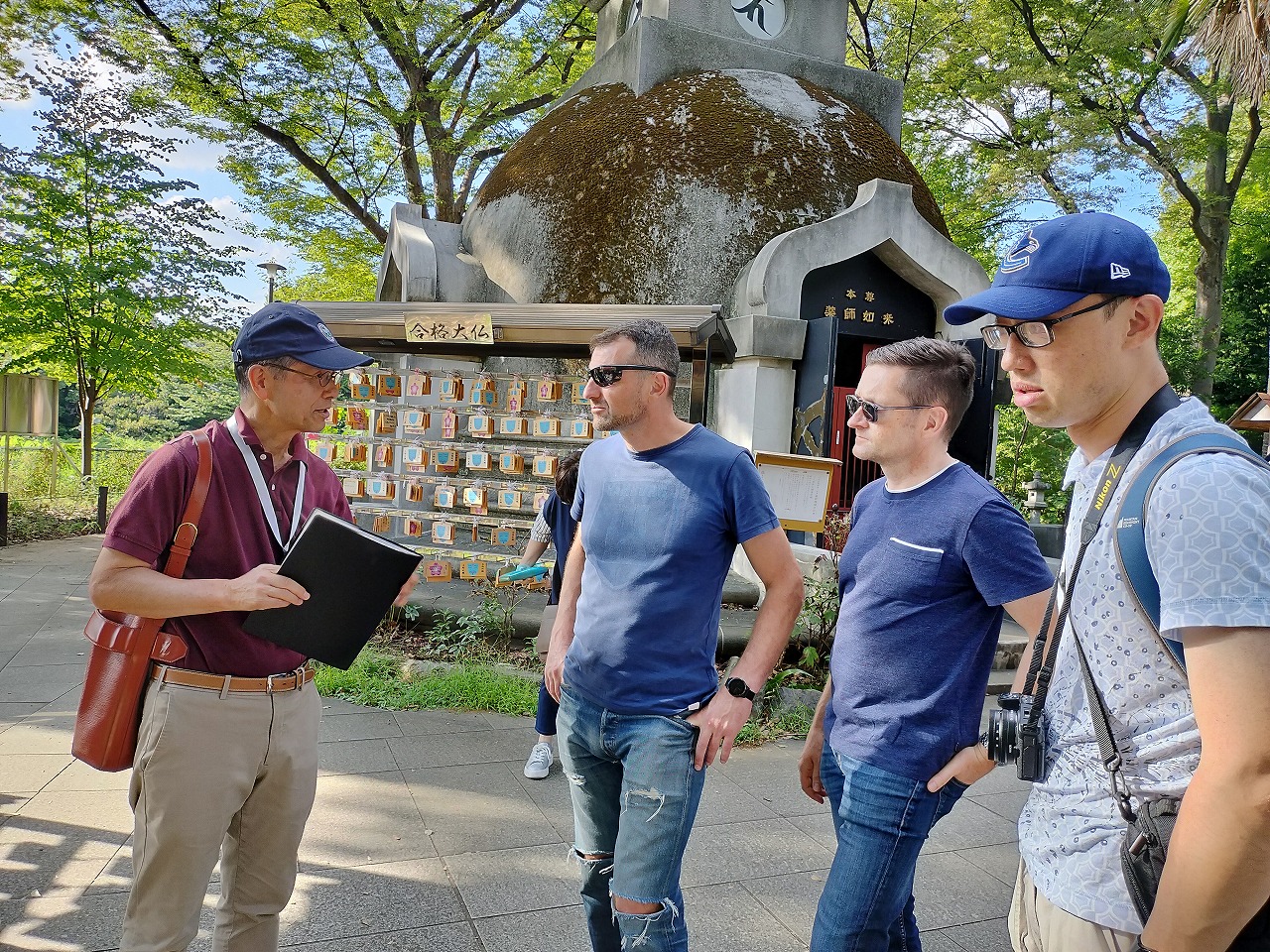
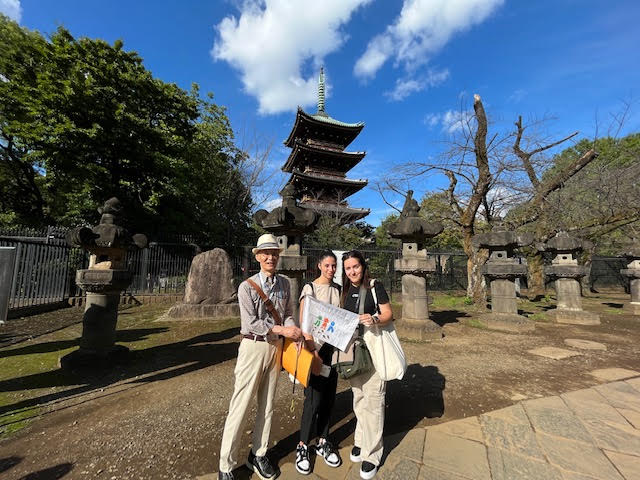



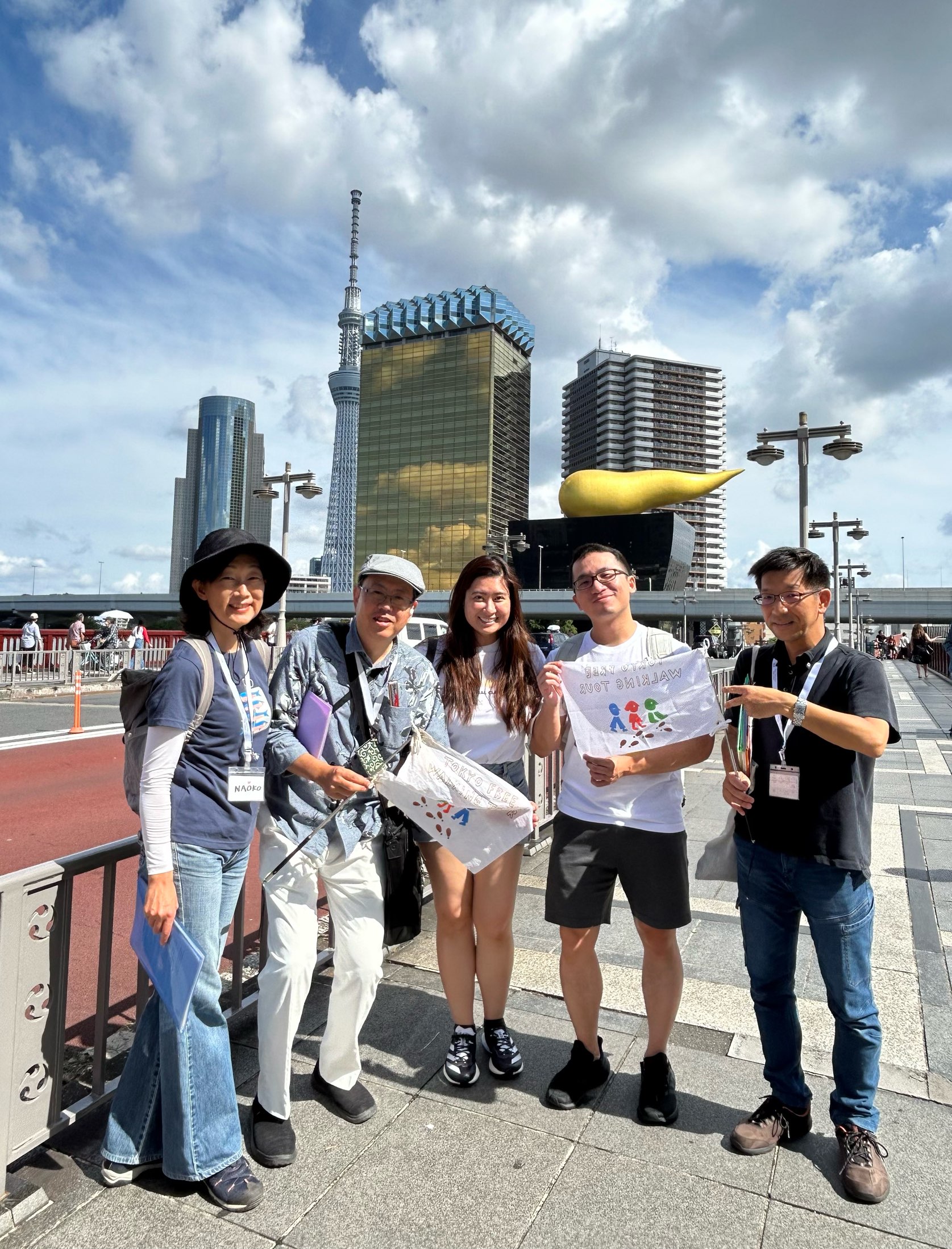
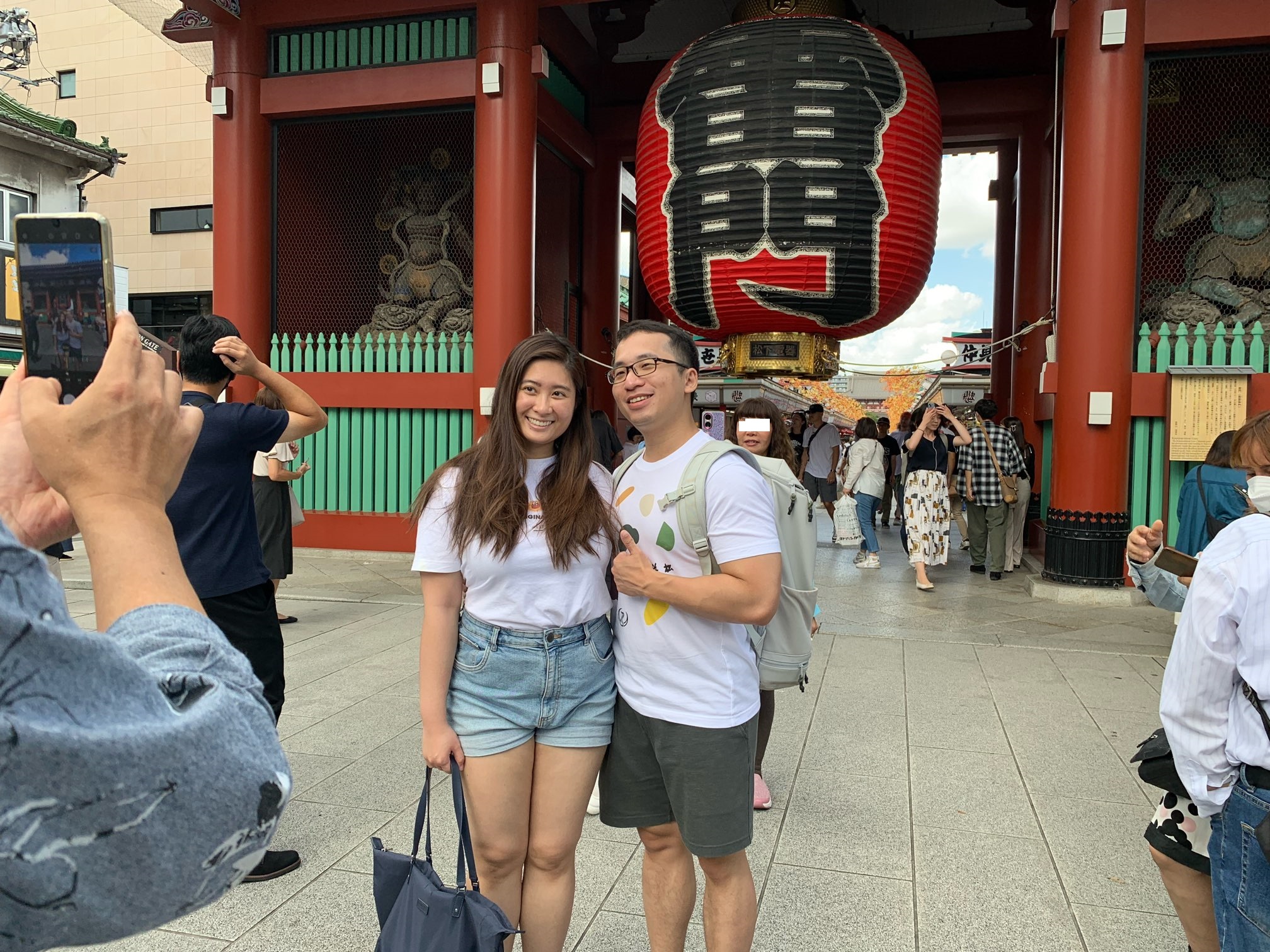
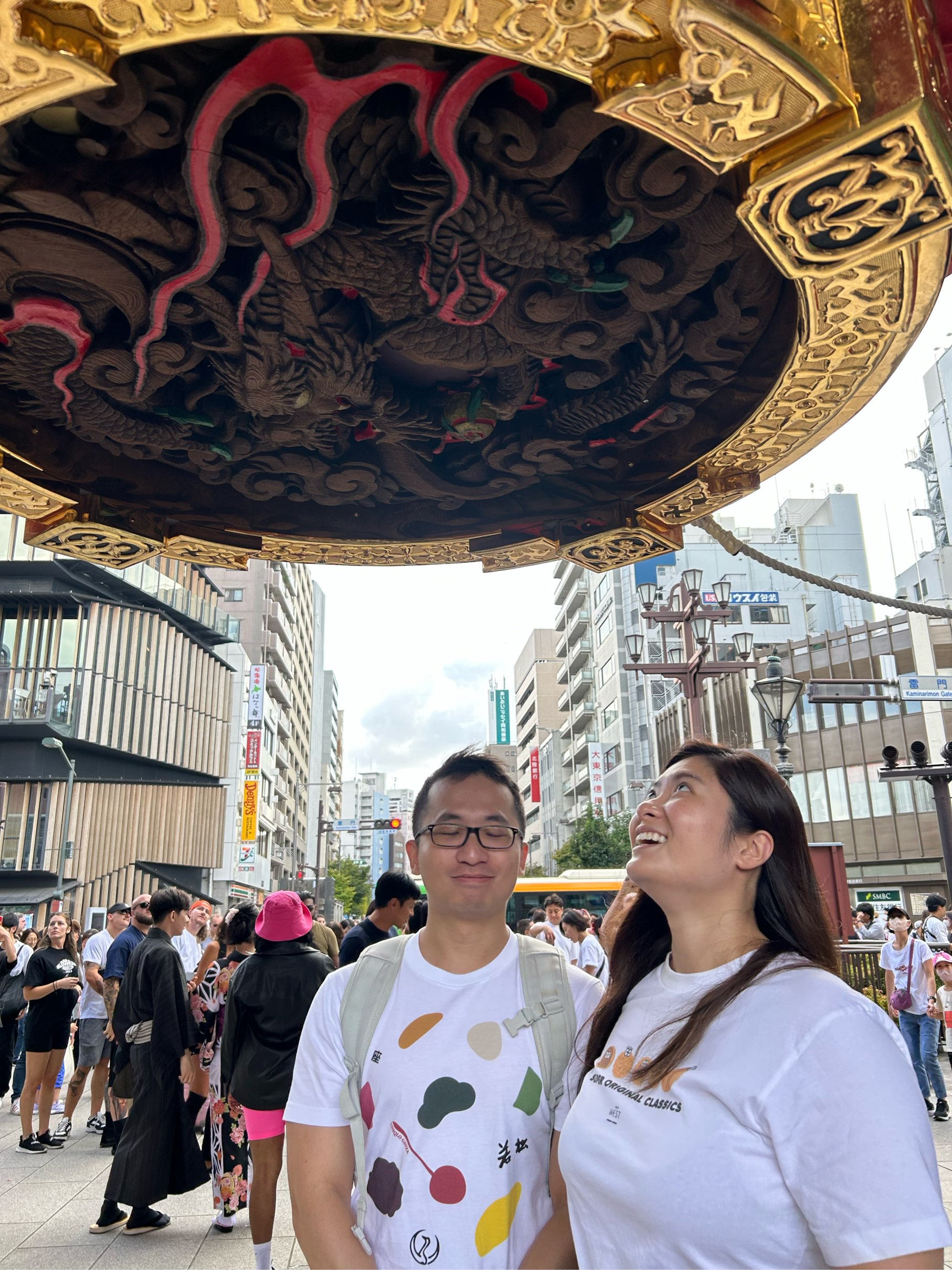
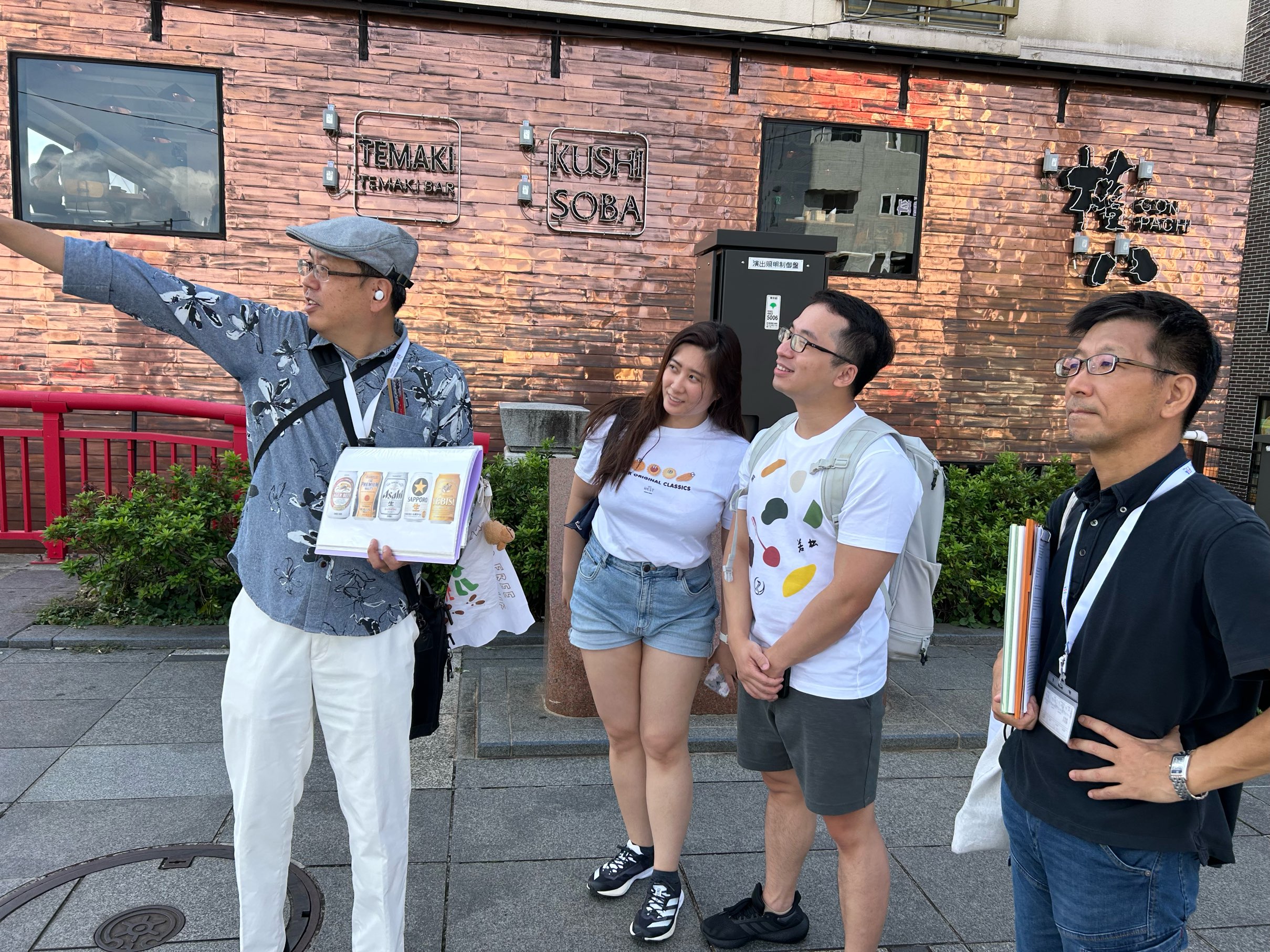
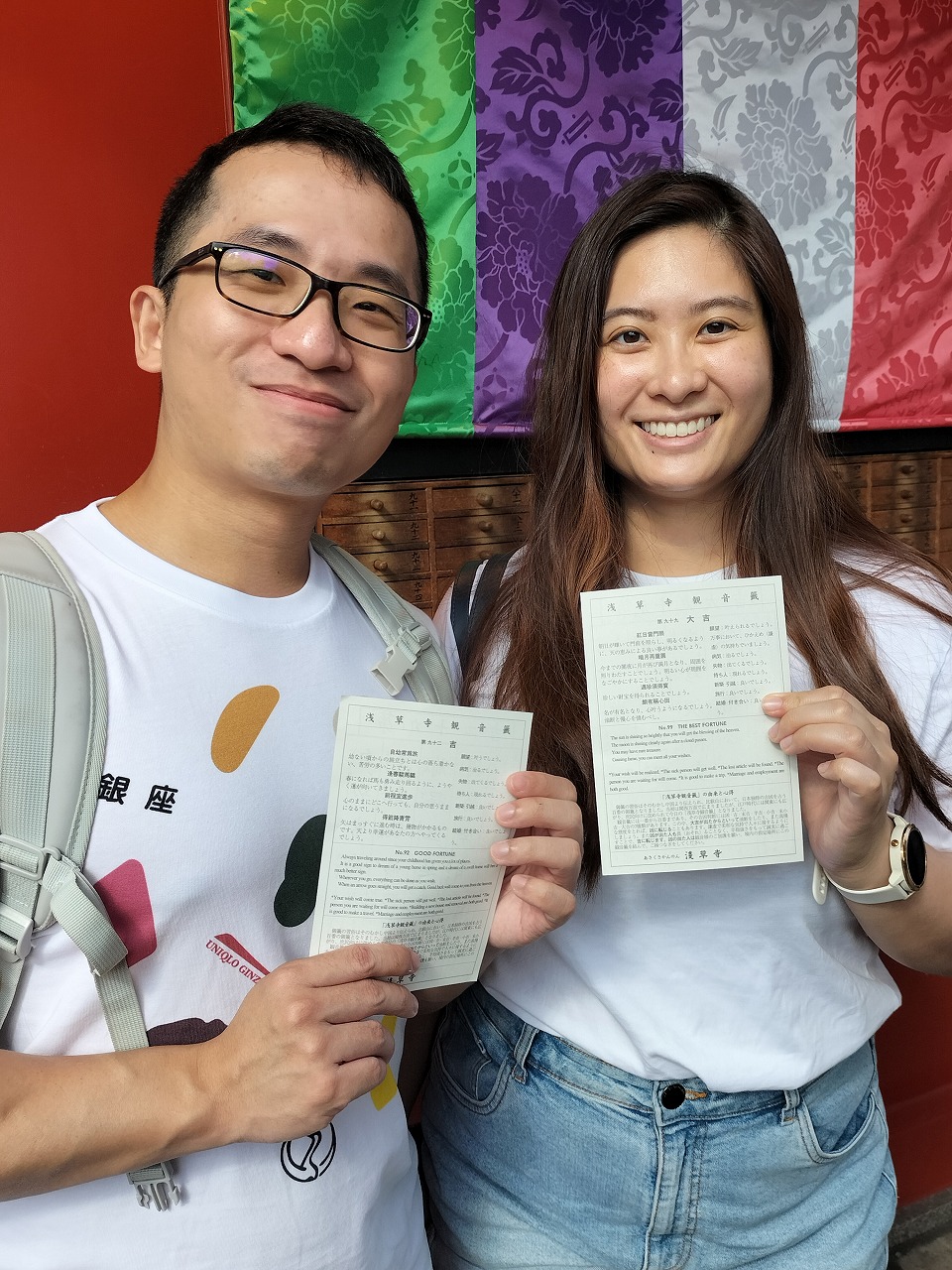
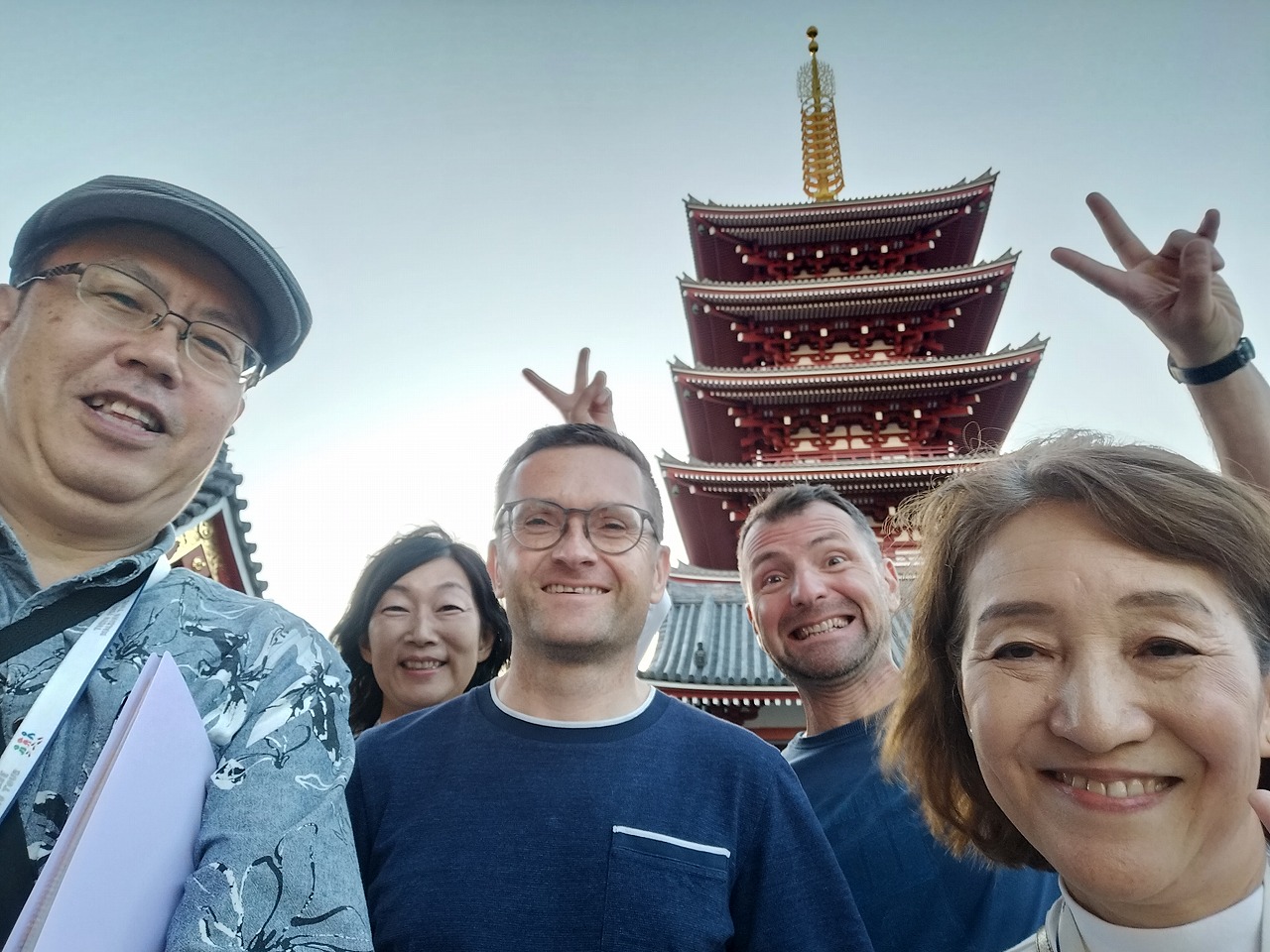





WWⅡdevastated the Asakusa area and almost all of Sensoji Temple buildings were destroyed. On the other hand, the present Ueno Park was the site of a civil war in the late 1800s. Most historical buildings were burned to ashes in both areas. However, some buildings which were constructed during the Edo period (1603-1868) still exist today.
They are Asakusa Shrine, Nitenmon gate and Denpoin Temple in Asakusa which have miraculously survived WWⅡair raids.
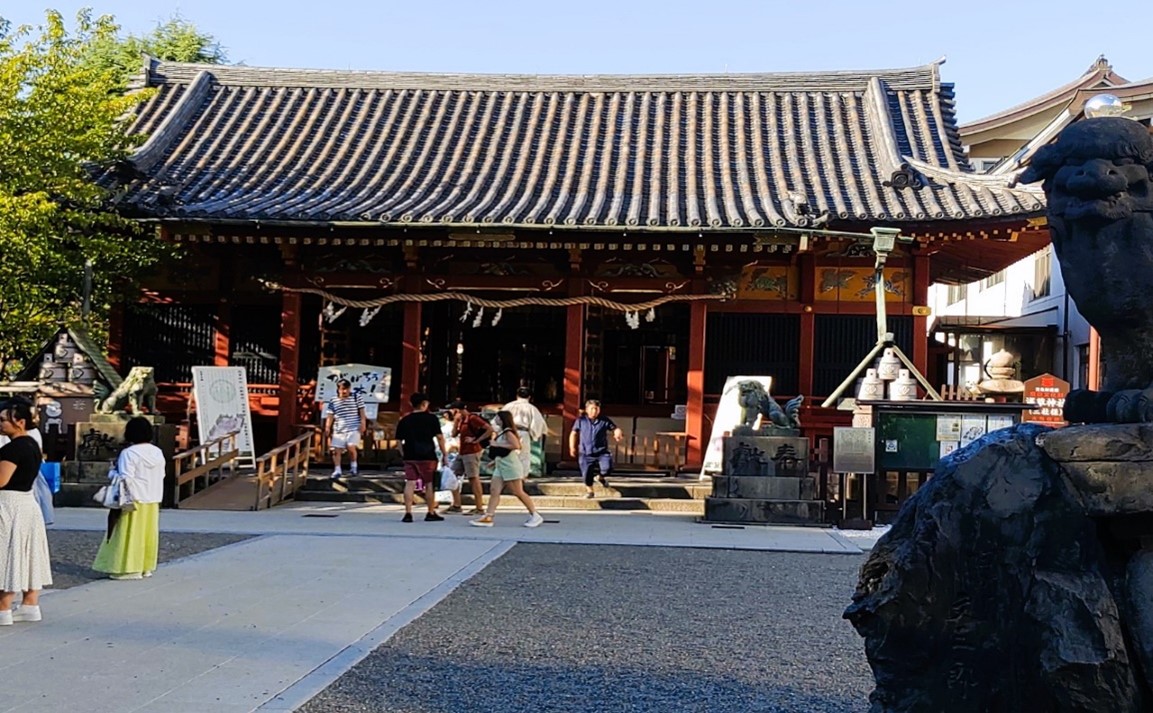
Asakusa Shrine (built in 1649) enshrines the three fishermen who discovered a Buddhist statue of the Goddess of Mercy about 1,400 years ago. The shrine building is just a simple one-story structure but has splendor. It remains perfect after more than 370 years.
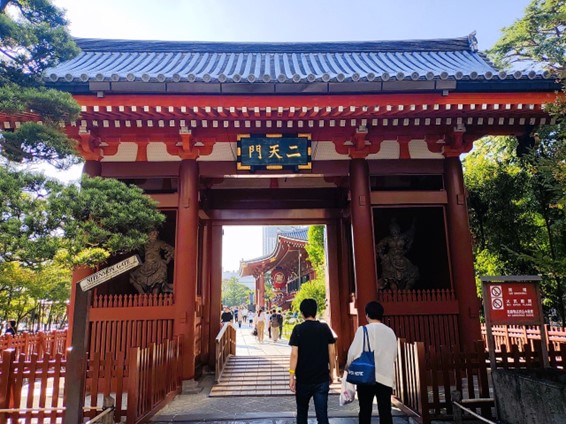
The Nitenmon gate (built in1649) beside Asakusa Shrine is to guard the east of Sensoji Temple. The color is bright red and the gate represents one of the valuable Edo period architectures.
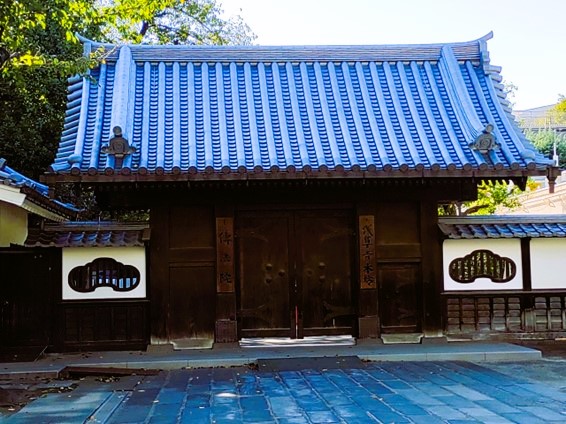
Denpoin Temple (built in approximately 1777) is the residence of the chief priest of the Sensoji Temple as well as a place of Buddhist training. It has a Japanese garden which is normally closed to the public, but sometimes opens in spring at the time of cherry-blossoms. The main entrance
can be seen from Nakamise Street.
Several Edo period architectures also exist in Ueno. The present Ueno Park was previously the place of Kaneiji Temple, the family temple of the Tokugawa clan which ruled Japan for 265 years during the Edo period. In the late 1800s, the civil war broke out between the Edo gov’t and the Meiji gov’t forces at this site. Most of the temple buildings were burned to the ground. However, three buildings have been remaining undamaged; Ueno Toshogu Shrine, the five-
story pagoda and Kiyomizu Kannon Temple.
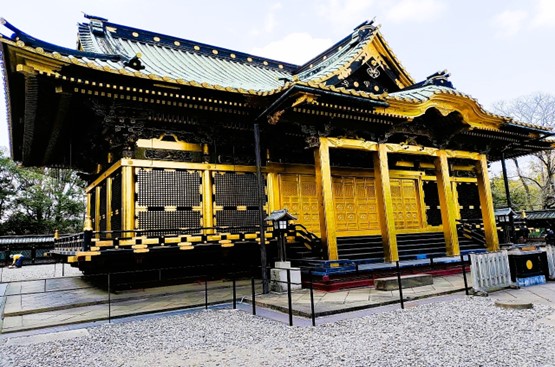
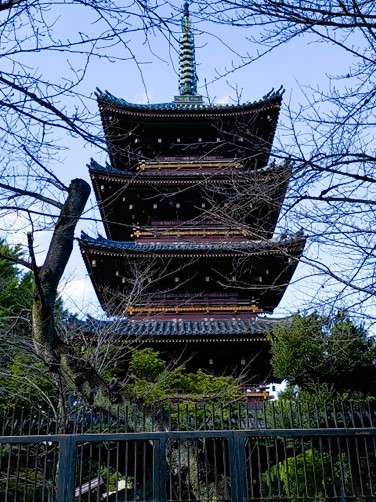
Ueno Toshogu Shrine (rebuilt in 1651) enshrines IeyasuTokugawa, the first shogun and founder of the Edo government. It all started when building a place for Ieyasu to rest eternally. The shrine buildings are as gorgeous as Nikko Toshogu Shrine.
The five-story pagoda (rebuilt in 1639) is seen in an adjacent location from the passage to the Shrine. The pagoda has been standing and remaining intact for more than 380 years. In Japan, there are 22 existing five-story pagodas built by the end of the Edo period and the Ueno five-story pagoda is one of them.

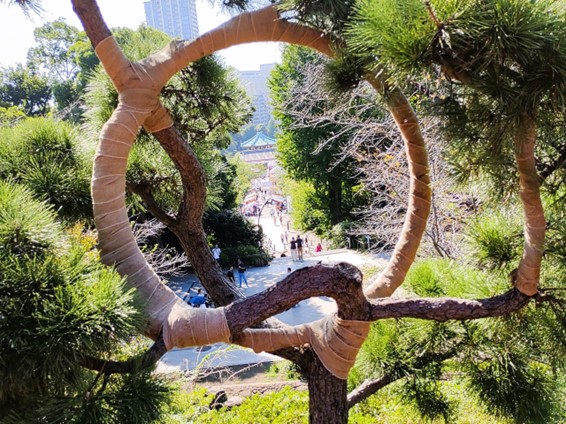
Kiyomizu Kannon Temple (built in 1631) is the oldest existing building in the park. The temple was modelled after Kiyomizu-dera Temple in Kyoto and was the place where the Edo citizens could experience ‘Kyoto’ in the east.We can see ‘Pine of the Moon’ (An artificial circular shaped
tree) from the balcony. A famous Edo period artist, Hiroshige Utagawa drew an ukiyo-e picture of the original Moon pine. The landscape remains the same from the Edo period from which we can truly feel length of history.
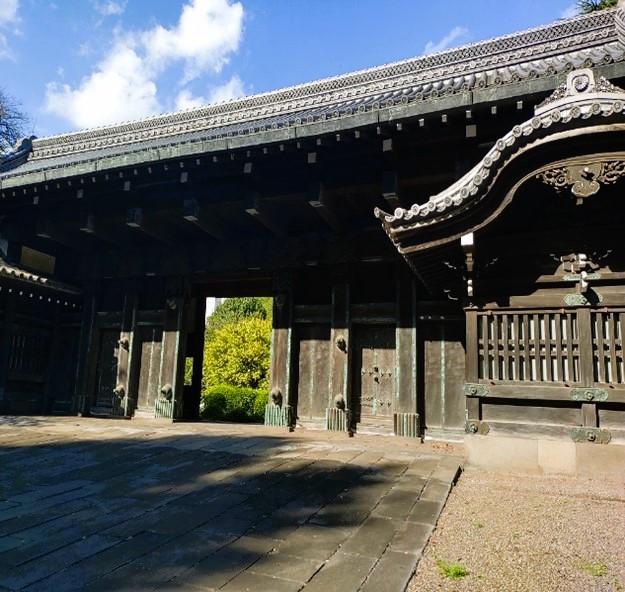
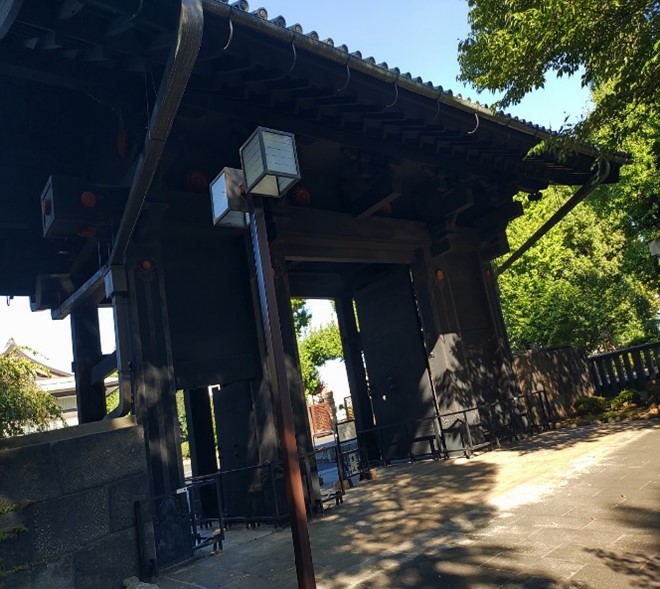
Also, there is a prestigious black gate in the premise of Tokyo National Museum which was built about 200 years ago. Moreover, the front gate of the chief priest’s residence of Kaneiji Temple (built in 1625) amazingly remains close to the Museum.
These historical buildings in Asakusa and Ueno have survived fires, earthquakes, lightning strikes and WWⅡair raids, and remained flawless from the Edo period. Most of these buildings in Asakusa and Ueno Park are in our tour routes.
The next tours in Asakusa and Ueno Park will be on October 8. Please have a look at the tour calendar in details on our website. We look forward to seeing you.
(Yoshi)

